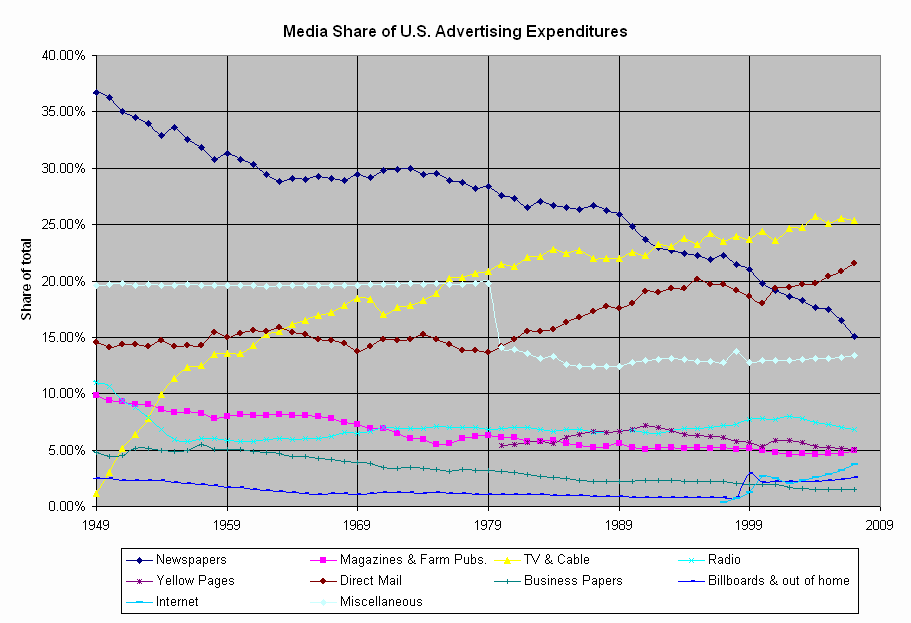For generations, local businesses relied on newspapers as the mainstay of their advertising budgets. In fact, until 1992, when TV and cable overtook them, newspapers were by far the largest source for overall US advertising spending, representing 37% in 1949 and dropping steadily to under 15% in 2008. And with that, the pundits began sounding the death knell for newspapers.
But for small and mid-size businesses, who cater to a more geographically local market, local newspapers continued to linger on as a critical source for advertising. After all, local news readers are well-qualified, targeted local business customers. The person reading the news is more likely to clip a coupon, read about your business, and walk into your store.
Today, the local paper is itself no longer the primary focus of local business advertising spend. Newspaper agencies have seen their profits eroded as advertisers move away from traditional print advertising in favor of online, mobile, and social media. (In upcoming posts I’ll discuss where that ad spending has headed, and what newspapers can do to survive and even flourish in the digital age.)
According to a 2010 report from Pew Research and the American Society of News Editors: “…the leaders of America’s newsrooms are nonetheless worried about the future. Fewer than half of all those surveyed are confident their operations will survive another 10 years—not without significant new sources of revenue. Nearly a third believe their operations are at risk in just five years or less. And many blame the problems not on the inevitable effect of technology but on their industry’s missed opportunities.”

Newspaper Association of America print and online ad revenue chart 2010
With print revenue dropping, and online revenues almost flat, newspapers indeed seem to be headed for extinction. Hundreds of fine papers, large and small, have vanished in the past few years.
The search for profitable models continues. Millions of dollars worth of “news experiments” have been funded by the likes of the Knight Foundation, the MacArthur Foundation, and others. A 2010 Pew Research report states: “Jan Schaffer of J-Lab estimated that since 2006, more than $141 million in nonprofit funding flowed into new media, a number that includes entirely professionally run sites such as ProPublica, headed by Paul Steiger, the former editor of the Wall Street Journal, as well as small ones, such as the Frostburg, Md.-based Appalachian Independent.”
On March 17, 2010, Professor George Brock, Head of Journalism for City University London, stated in an inaugural lecture: “I don’t have a magic fix answer to the burning question of how we pay for sustainable journalism. I’m in good company: neither does anyone else.”
With all these years of experimentation, why do the solutions still seem to elude the newspaper industry? I believe the answer is simple: the solutions are all around us; hundreds of startups are making money doing precisely what news outlets need to do today. But the newspaper industry seems oddly blind to these opportunities, or worse, views them the way a cancer patient views chemotherapy.
Can newspapers bridge the digital divide? They can certainly go online; that’s a simple matter of applied technology. Can they transform themselves into “advertising centers of excellence” in a digital world without losing their journalistic integrity? I believe they can.
Will they find it easy? No; journalists are not especially known for business and technology thought leadership, and they already have a lot of catching up to do. In fact, what passes for innovation in the world of journalism today is little more than simply coming up to speed on well-established technology. True innovation will come later, once they master the basics.
Experiments in journalism are terrific; I admire their creativity. But what the newspaper industry really needs is to get smarter about revenue, and that means local business advertising.
